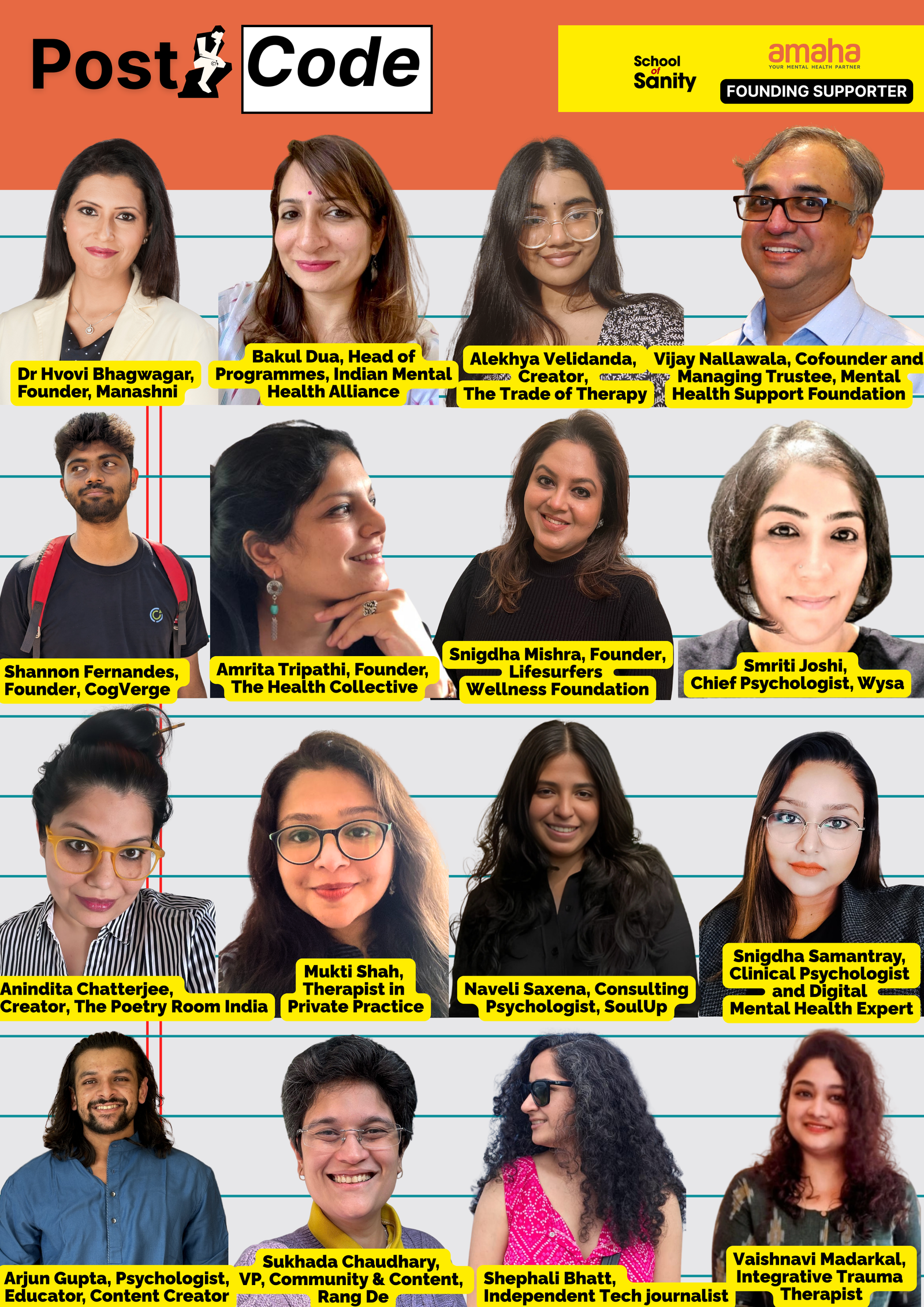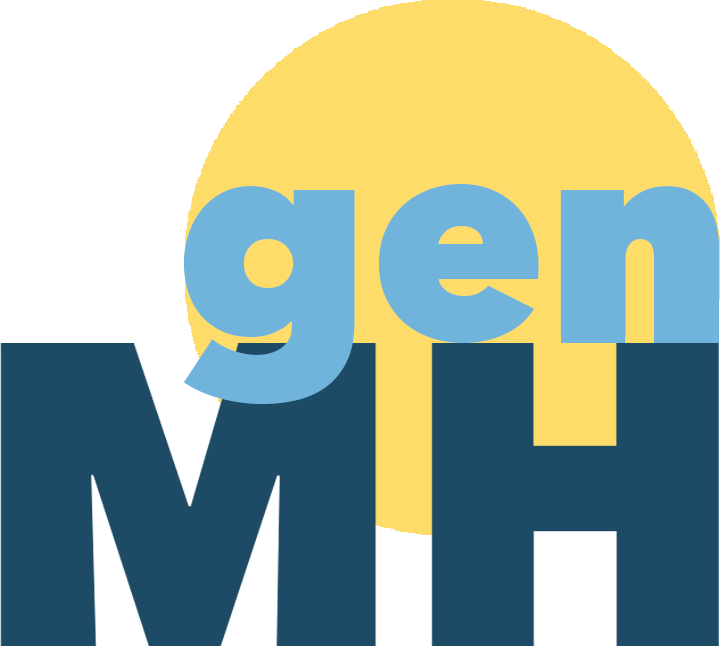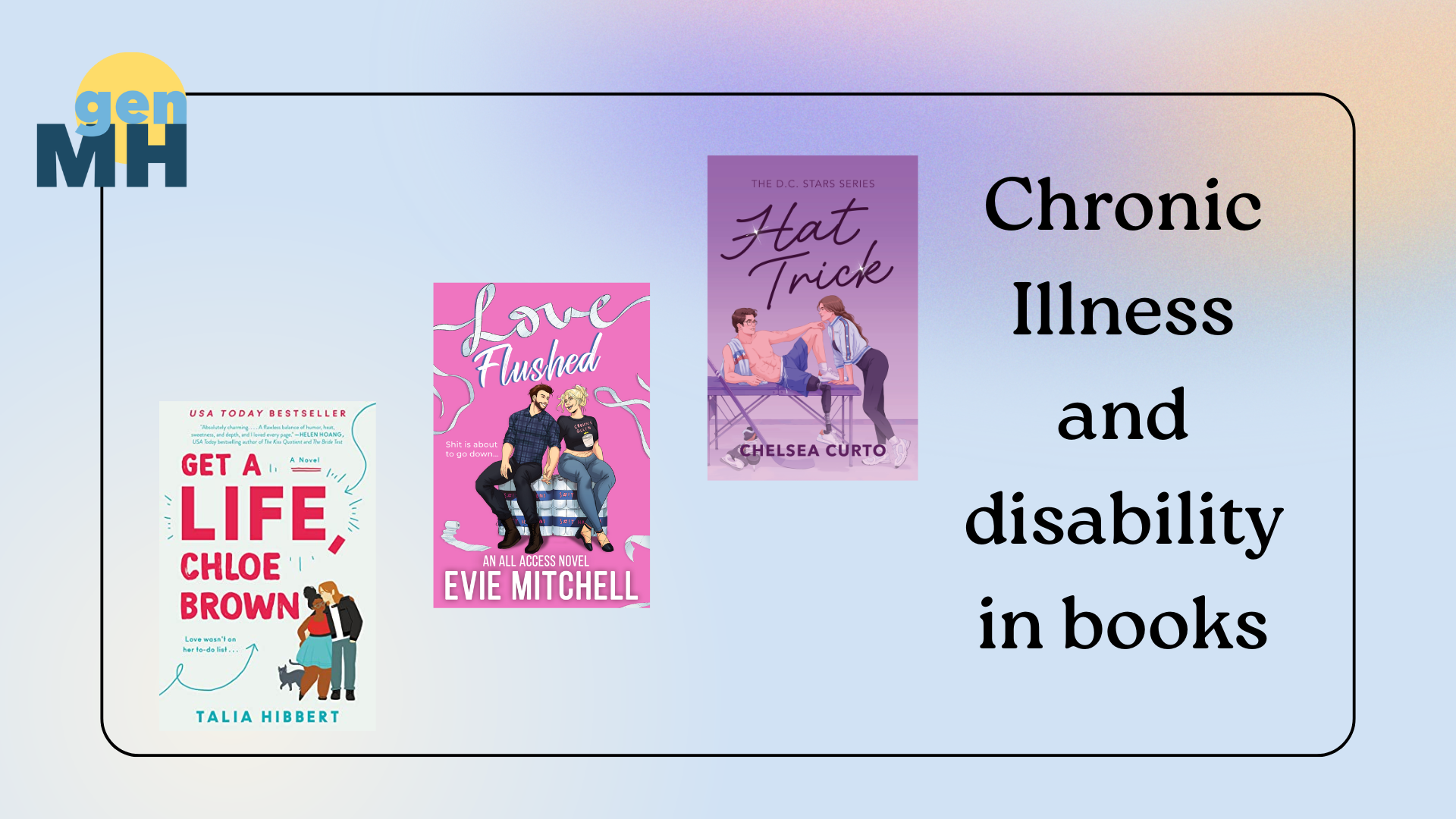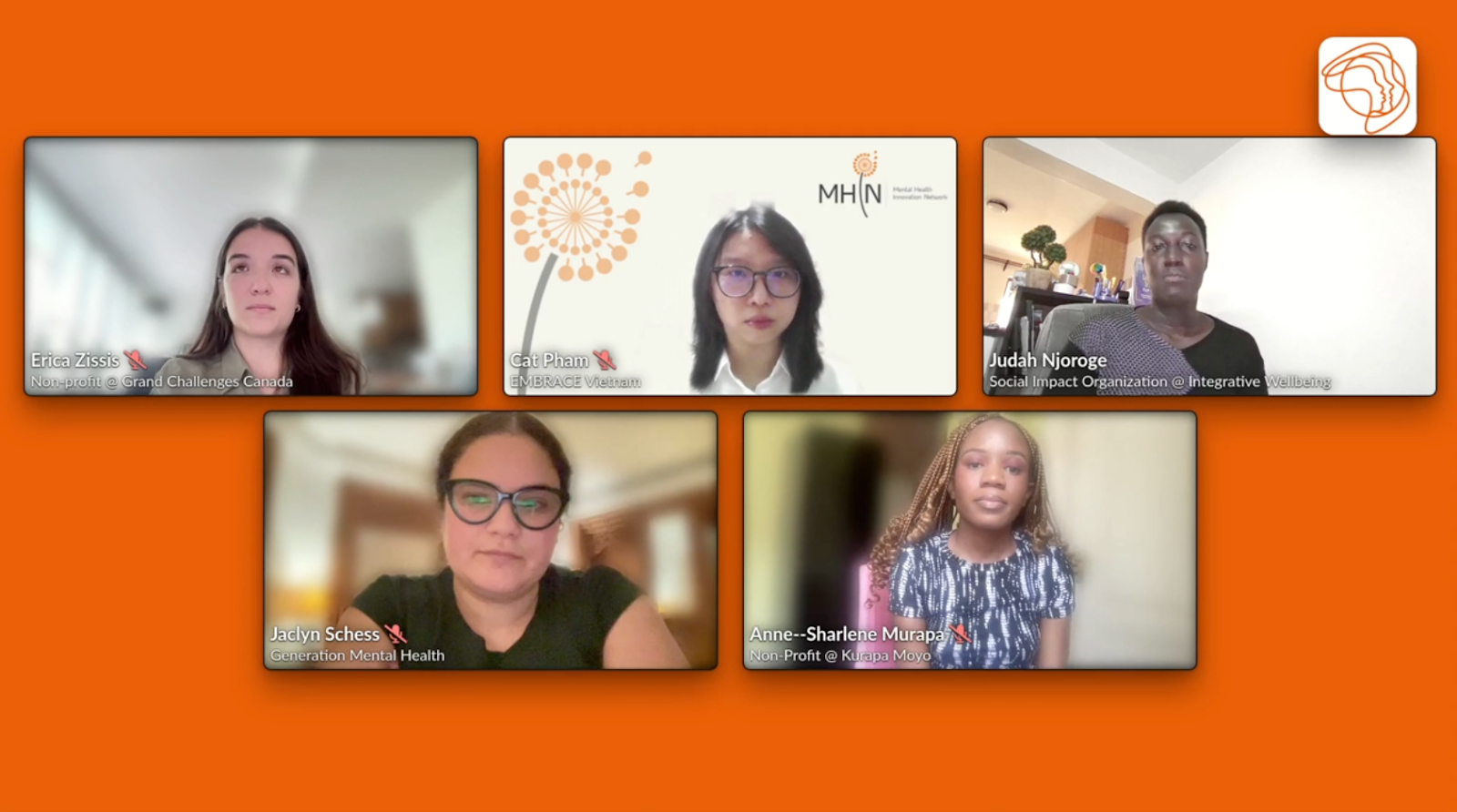Dispatches from PostCode: The Therapist’s Guide to the (Social Media) Galaxy
Tanmoy Goswami, mental health writer and founder of Sanity brought together speakers from the therapy ecosystem for discussions around the use of social media in the field.

How do you feel when you see your therapist on social media? If you’re a therapist, how do you feel about doubling up as a content creator? It isn’t far-fetched to imagine that many clients/patients today discover or meet their therapists on social media. How exactly are mental health professionals navigating this additional dimension of their work?
I recall the early days of mental health social media, when there was a sudden proliferation of mental health creator accounts, mostly advocates and lived-experience experts sharing their journeys in the hope of finding community, offering inspiration, or gathering support. Destigmatisation was the primary call to action from these champions and advocates. Campaigns and events were pushing us to talk about our mental health struggles. When celebrities spoke about it, they were made poster boys (or poster people) for the cause.
Twitter used to be a platform we could still use as a collective mobilisation tool, and the media were asked to report on mental health issues sensitively. Talking about mental health was the first step, using the right words when doing so, the next. On the corollary, we saw the emergence of therapist accounts. (This wave brought in psychologists, psychotherapists, psychiatrists, and charities/collectives). Qualified people with degrees in human psychology and academic expertise in human behaviour offering you the tools and vocabulary to bridge the huge emotional expression gap that hitherto existed. The flavour of the content was “empowering with information.” You could identify with the situations a therapist was describing. It gave you the words to talk about your experience. It normalised the idea of sitting with a therapist and deciphering your emotional patterns.
But social media content creation has never stayed static. Algorithms are constantly tweaked in favour of one element over another, features discarded at the whims of algorithm monopolies. Suddenly, videos became the staple diet of the internet, chronological feeds were discarded in favour of a discovery-driven experience, and more recently, hashtags have been made redundant. The pressure to stay relevant, in light of everything being so transient, overpowered the original mission. Now you needed to stick to a posting schedule, feed the algorithm timely, prepare content calendars. Comment on the viral post doing the rounds. Have a polarising opinion on everything that’s being talked about. The algorithm likes when you bait people into watching your videos. Write sensational hooks.
We might have overcompensated: the ecosystem did such a good job of filling in the information gaps and invaded so many feeds that
therapyspeak became a thing. Several
psychologists came under scrutiny for their content. A concern that author Amanda Montell has also addressed in her book The Age of Magical Overthinking: Notes on Modern Irrationality. Words like
trauma and abuse were being used irresponsibly to describe events and experiences.
Therapists became influencers.
It’s a relatively recent development, and as such, there have been few conversations beyond scandalous concerns. Can the industry and academic fields decide on a code of conduct to create contours on what’s acceptable and what’s not when it comes to therapists’ social media presence?
PostCode Unconference
On April 12, 2025, 17 voices from peer circles, media, therapy and the startup world, and around 200 participants came together for PostCode, a first-of-its-kind online interdisciplinary learning forum for therapists navigating social media ethics and best practices, organised by Tanmoy Goswami, mental health writer and advocate and founder of
Sanity, an independent mental health storytelling platform. Goswami shared in his initial concept behind the event, “Freud may have squirmed at therapists turning into influencers. But in 2025, that orthodoxy is passé. Therapists are ruling social media.
So much that some want to quit practicing therapy altogether and become full-time content creators…At the same time, especially post-COVID, social media helped mental health professionals get much-deserved public recognition and expand their careers beyond their clinics. But what started as a warm, fuzzy corner of the internet is now beset with thorny questions. As mental health content by therapists exploded on TikTok, Instagram, and LinkedIn, along came a bunch of ethical crises.”
The forum wanted to address the knotty and needling questions around how therapists and other mental health professionals utilise and leverage social media platforms to talk about their field, to improve access to mental health information and resources, and to do all of this while upholding client privacy.
Ethics Versus Algorithm
The first panel of the day, titled “Ethics versus the Algorithm,” featured Smriti Joshi, Chief Psychologist at Wysa, and Snigdha Samantray, Clinical Psychologist and Digital Mental Health Expert, both of whom have extensive experience since the early days of digital mental health.
When asked to explain the algorithm through metaphors, they likened it to “an overly eager receptionist with memory issues and people-pleasing tendencies” or a “magician performing a trick trying to hoodwink you by predicting your actions,” both comparisons receiving a virtual chuckle from the audience. When discussing algorithms, it is also essential to recognise that the fundamental principles and concepts of human behaviour (reinforcement, operant conditioning, dopamine, and the reward loop) are central to the functioning of these algorithms. Algorithms, however, don't understand nuance.
The benefits of digital mental health were laid out: many people can’t make it to physical therapy rooms, whether due to cost, geography, or stigma. The virtual format has made it possible for them to access therapy sessions, and in many cases, made it affordable to do so too. Which is all the more reason for professionals to apply the same clinical depth and ethics in the therapy room.
When they stepped into the digital mental health space, the panellists knew they were treading choppy waters. What may have started in the pre-pandemic period as a novel means of accessing mental health teleservices became a norm, and as Snigdha remarked, “Digital mental health was not a choice, it was a tide.”
When mental health professionals choose to have an online presence, they are also being perceived by their clients. Which brings us to another critical question: how should therapists conduct themselves online?
How does my social media account make you feel?
When your therapist is actively talking about their work on social media, how does that make you feel? Content creation, especially in this space, cannot be untouched by politics. Would you stop seeing your therapist if you find out that their political beliefs don’t align with yours?
Let’s flip the narrative and address the mental health professionals. If you are a therapist, would you censor your political views to prevent backlash or double down on them? Would you keep churning content and engage with every viral moment to keep the algorithmic beast happy?
In the sessions, “Whose story is it anyway? The boundaries of ‘knowledge sharing’ on social media” featuring Dr Hvovi Bhagwagar, Founder, Manashni, and Anindita Chatterjee, Creator, The Poetry Room, and “Investigating your ‘why’ as a therapist on social media” featuring Mukti Shah, Psychotherapist in private practice; Shannon Fernandes, Founder, CogVerge; Snigdha Mishra, Founder, Lifesurfers Wellness Foundation; Alekhya Velidanda, Creator, The Trade of Therapy, these dilemmas were discussed.
One of the early questions behind PostCode was this:
The trend of sharing patient stories for the sake of knowledge creation – can this ever be kosher, even with consent?
The exchange of patient stories through case studies, discussed in private academic settings, and/or anonymised and published in scholarly journals, has all been instrumental in pushing the field ahead. But a story shared on the ephemeral social media does not serve the same purpose. Yet, there are no guidelines prohibiting therapists from doing so. They should not, but no guardrails are stopping them from doing so, only their self-imposed ethics as a content creator or extension of their professional ethics as a therapist into the social domain.
At the same time, as discussed in another panel, the emergence of the #TherapistCommunity on social media platforms has scaffolded therapists against bait content or sensationalist takes. Finding fellow therapist-content-creator hybrids offers a reprieve from what can feel like a vortex on social media. Therapists, after all, are also human beings.
Back to the question of safeguarding client privacy and upholding confidentiality and ethical conduct in the client-therapist relationship. From the therapist’s side, this requires an inquiry into their reasons for being on social media: self-expression, community, information dissemination, or marketing for their therapy business. The “why” behind a social media presence was discussed at length in the panel. Therapists need to combat temptations in the disguise of reasons, yes, as mentioned before, algorithms tend to favour sensational content over nuance, they thrive off polarised views, but therapists need to be conscientious about the posts they make. The template of “listicles” has, for better or for worse, translated into the short-form video media, but it runs a very real risk of reducing a complex, nuanced conversation into a series of bullet points or steps.
To that end, psychologist Arjun Gupta also offered a workshop with actionable tools to help therapists define their content goals and curate content mindfully.
What mental health content do we need? Can it be joy?
A crowd favourite panel of the day, 'Centring Narratives of Recovery, Agency, and Joy in a Broken World', host-moderated by Bakul Dua, Head of Programmes, India Mental Health Alliance, and Sukhada Chaudhary, Vice President, Community and Content, Rang De, offered much-needed levity in the discourse. Mental health storytelling need not always be about unpacking dark experiences, the serious stuff, or profound solemnity. Humans often find humour to get through their daily lives, and as such, this humour should be reflected in our content.
Joy gets a bad rep very soon in mental health content, often within reason. Between inspiration porn, toxic positivity, wellness influencers, and LinkedIn soothsayers, joy got a terrible name somewhere. But we need to claim joy for a complete human experience. “Memes,” for example, Bakul remarked, “are a portal to depth.” She adds, “They’re a means of metabolising life rather than escaping it. No one is above a good joke.”
It echoes what we hear from many marginalised groups. The stories about marginalised identities often focus on their pain and suffering. Stories of their joy, then, feel rebellious. Micro-celebrations or small wins were highlighted as a significant part of recovery, and as such, should be acknowledged in the documented versions of our journey.
Attendee’s Note
Sitting across from my therapist in her cabin, I have often wondered if she understands how social media (an occupational hazard for me as an independent professional, a creative freelancer) influences our lives, professional identities, and social (or even financial) capital. My curiosity takes me places, and I am not above admitting that I have looked up my therapist online. Upon finding that her Instagram account was set to private, my immediate reaction was one of relief, and as I registered that, I was shocked. I’m not an algorithmic prude; in fact, I am the exact opposite of that. My work revolves around helping people establish their personal brands and optimise their online marketing engines. Why the reaction, then? On the one hand, I find it affirming to see therapists in the trenches alongside me, and on the other hand, I appreciate having a low-key therapist, a nod to the slippery slope that is content creation by therapists.
I’m sure of one thing: If my therapist were extremely online, I would want them to acknowledge the shades of grey where the mental health content ecosystem operates and to be an active participant in the discussions that this edition of PostCode has highlighted.
Sanity by Tanmoy
is an independent, reader-funded and ad-free mental health storytelling platform run by Tanmoy Goswami. This blog talks about the
first edition of PostCode held in April 2025.
Author Bio:
Kritika Narula is a writer, journalist, content marketer from Delhi, India. You can find her on Instagram and Threads, on BlueSky, on Twitter, and on her website.


